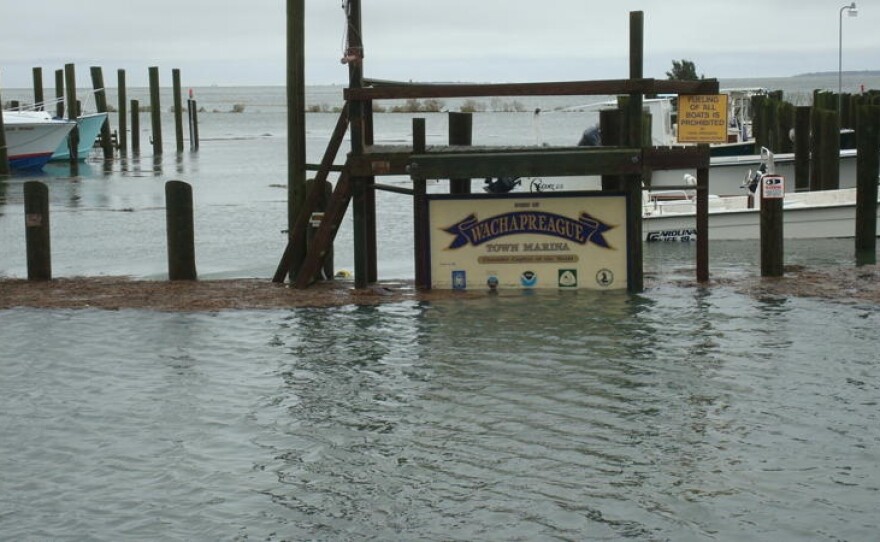A new analysis by LendingTree found Virginia has seen the most coastal flooding out of anywhere in the U.S. in recent years.
About 159 times each year, excess water intrudes onto normally dry land because of high tides or storm surge, according to the online personal finance marketplace. The number refers to individual events at the city or county level, not the total days with flooding.
LendingTree insurance analyst Rob Bhatt said geography plays a big role.
“One of the challenges for Virginia is that there is so much land,” he said. “The shoreline areas exposed to potential coastal flooding are so long that there's just a lot of risk because of that.”
About 250,000 acres in the state are less than 5 feet above the high tide line, according to Climate Central.
Hampton Roads in particular has long been a hotspot for rising seas, driven by climate change and sinking land.
“As the oceans rise, of course there's greater potential for floods to affect buildings and homes and people,” Bhatt said.
LendingTree researches a variety of trends that impact financial industries, including real estate and insurance, Bhatt said.
That led them to look into flooding, which is “becoming a more pressing concern for more homeowners than before,” he said.
The company used flooding data from the Federal Emergency Management Agency to look at 23 coastal states.
Virginia tops the list “by a wide margin,” analysts wrote, followed by Florida with an average 108 annual coastal flood events and Maine with 95.
The report also created a risk score for each state, taking into account not just the amount of flooding, but also the percentage of populations exposed to it and expected annual losses per 10,000 residents.
Virginia ranked third in overall risk, behind Louisiana and New Jersey.
Accomack County on the Eastern Shore was deemed the most vulnerable area in the state and among the top 10 riskiest localities nationwide.
Overall, East Coast states appear most at risk from coastal flooding, according to LendingTree. That’s partly because of problems with erosion, sinking land and loss of coastal wetlands that traditionally buffer tidal flooding.
Bhatt said people who live in these coastal areas should look into federal or private flood insurance for financial protection.
Homeowners insurance typically does not cover flood damage, and most mortgage lenders don’t require flood insurance unless a property is in an especially high-risk zone.
But more than 40% of FEMA’s flood insurance claims come from outside those high-risk areas, and that’s only counting those who voluntarily opted into buying it.
When feasible, Bhatt said homeowners can help prevent flood damage by elevating essential appliances such as HVAC systems to higher floors, or retrofitting with more resilient building materials.
It’s also essential for communities to invest in infrastructure to better manage floods on a wider scale, he said.






